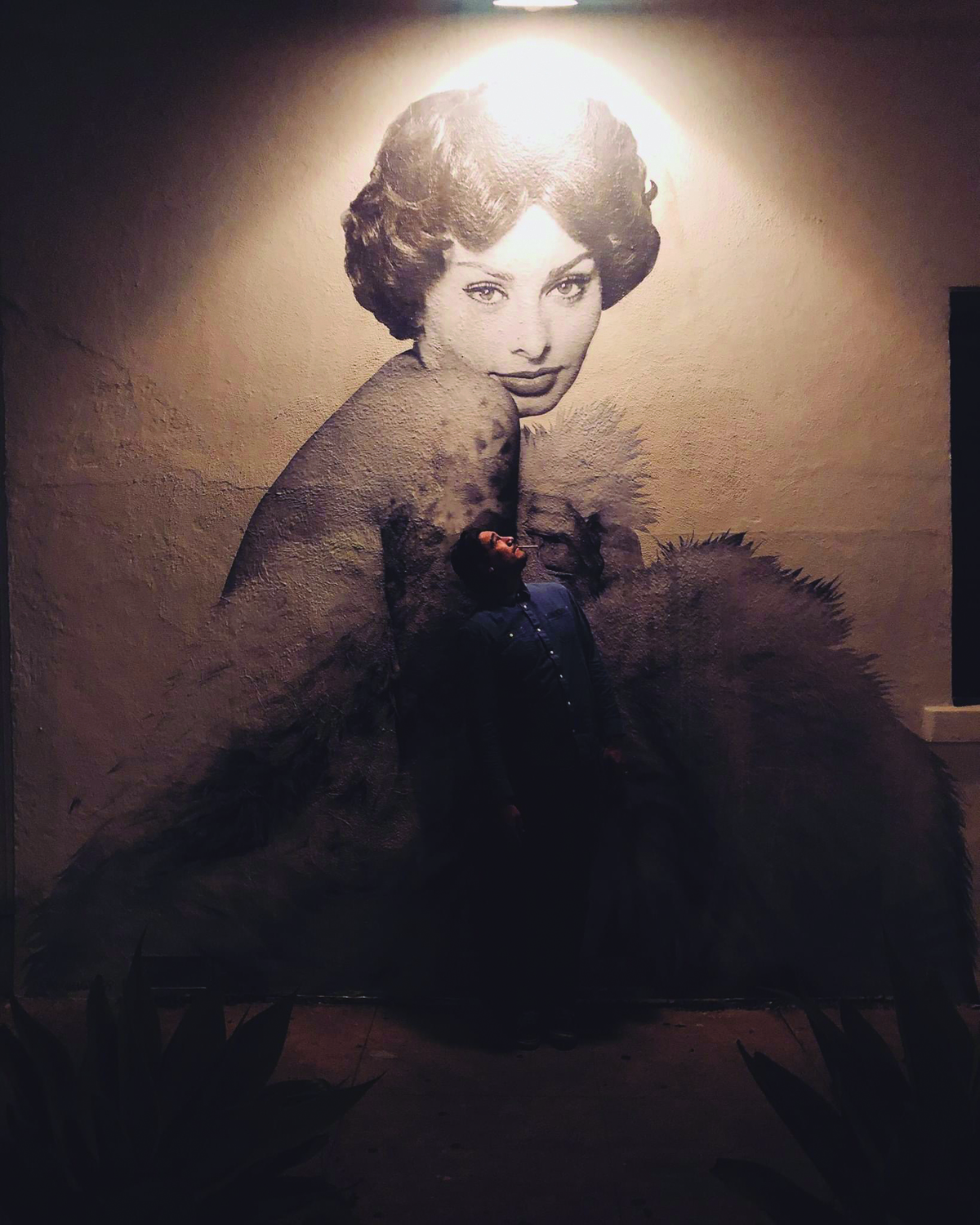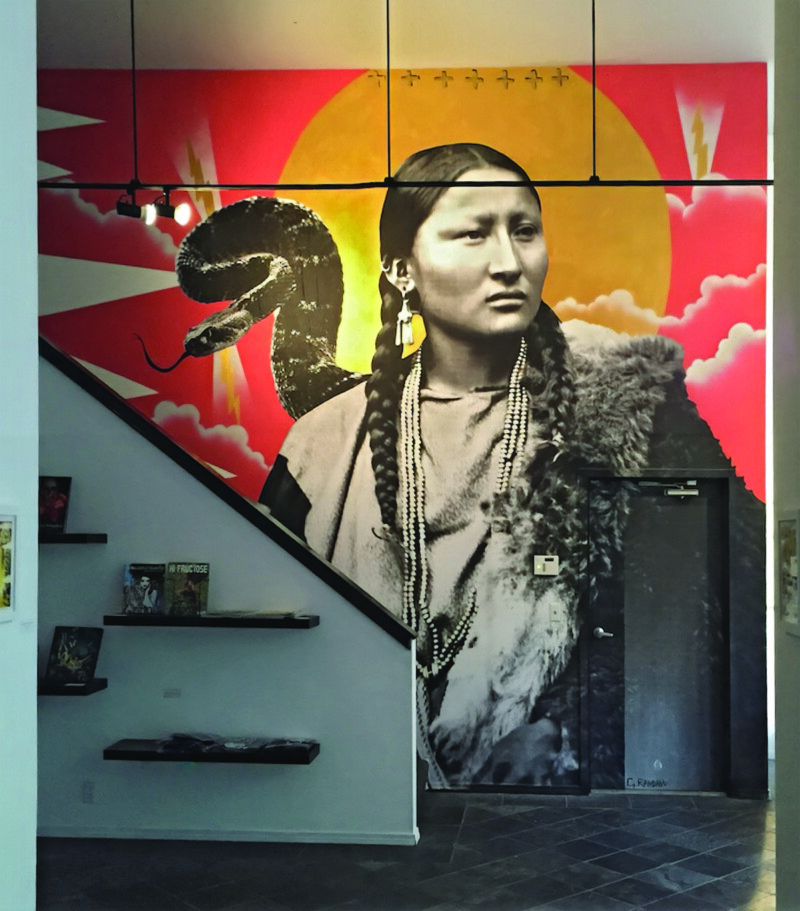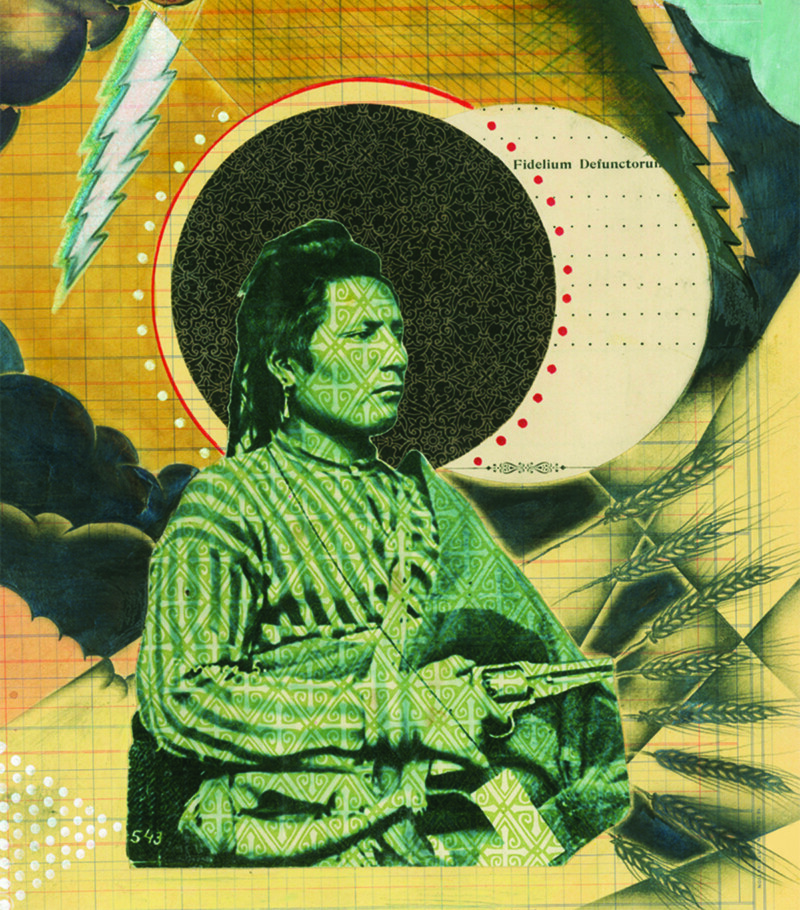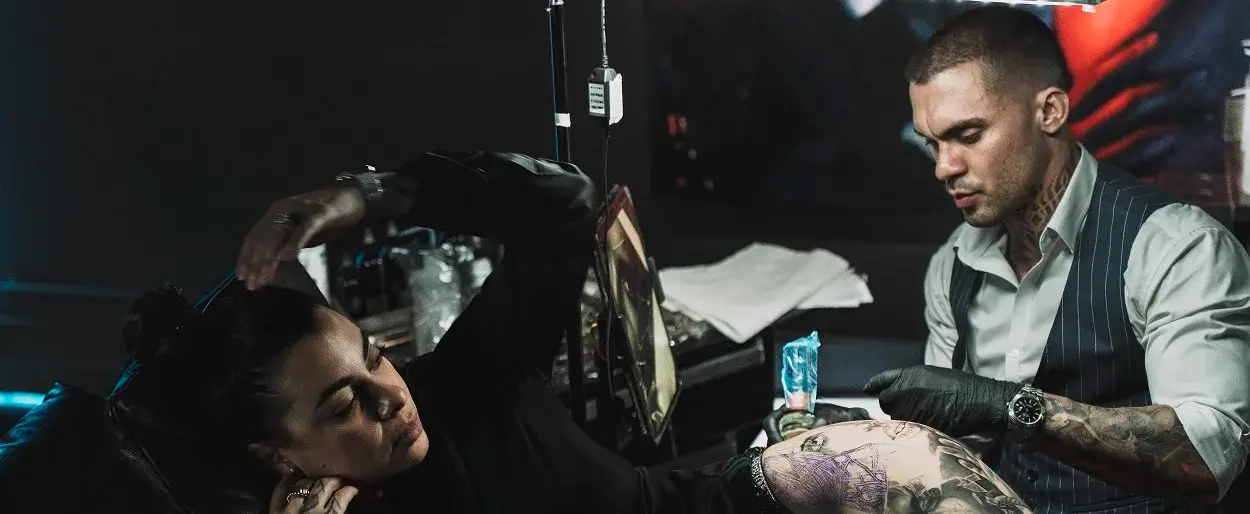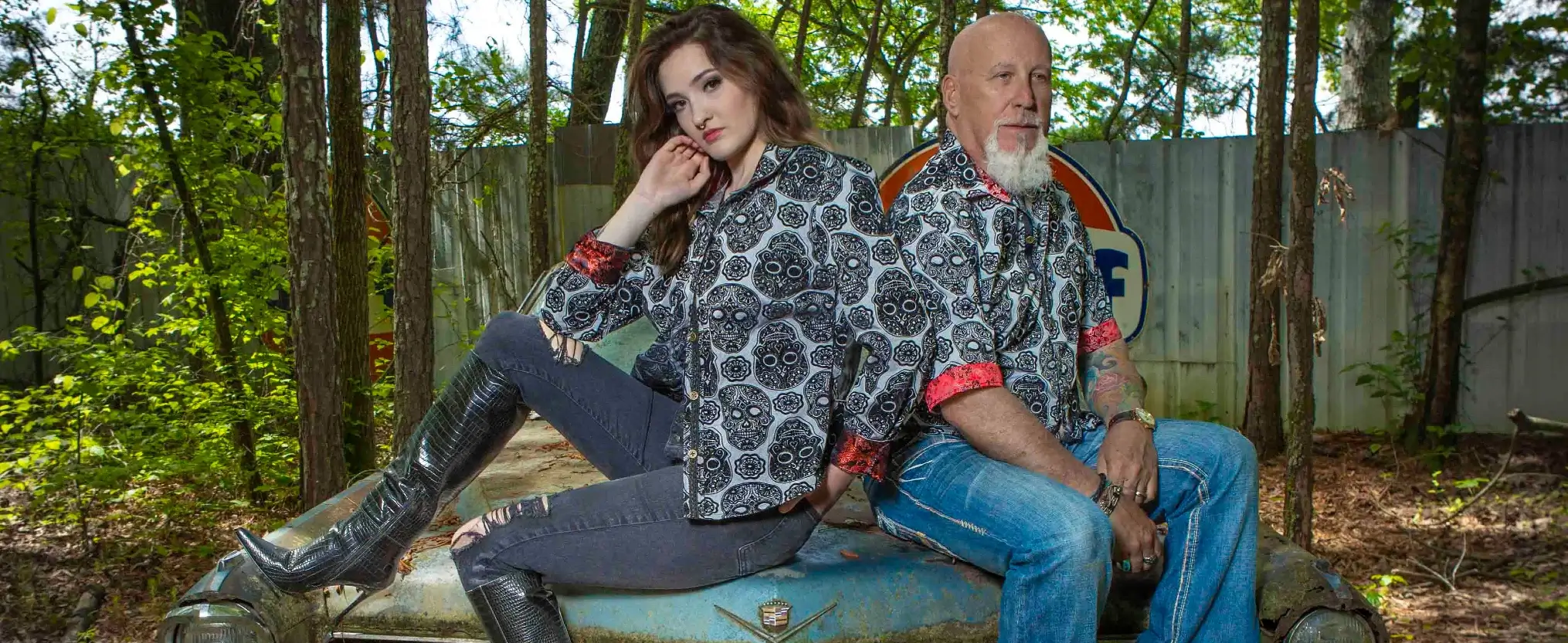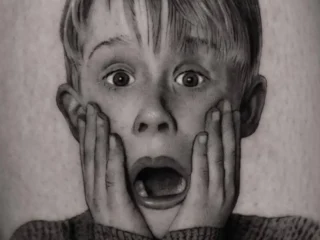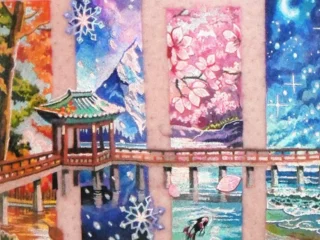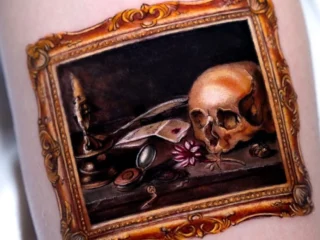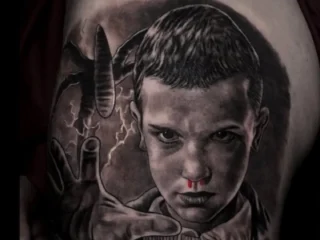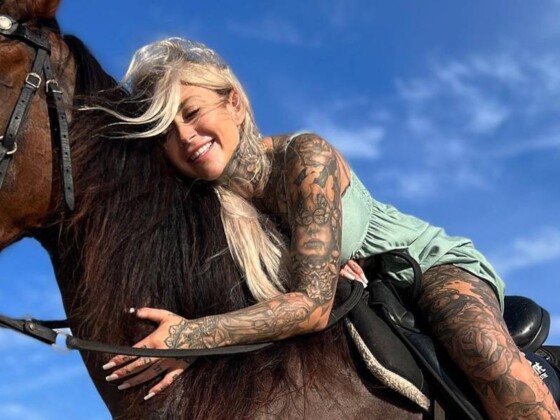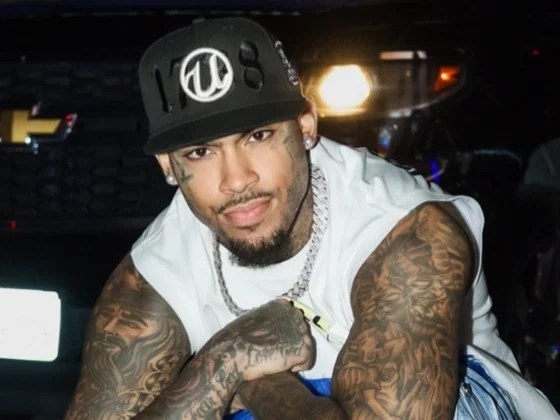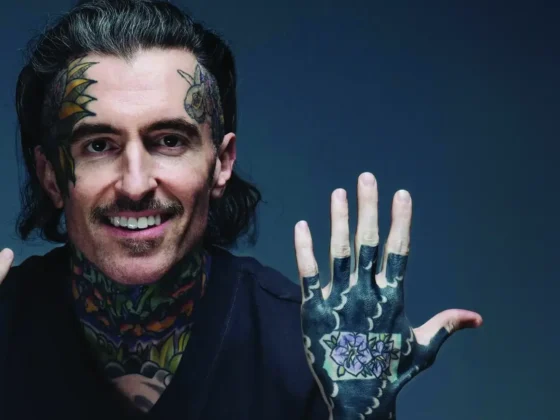Inked Mag Staff
July 8th, 2024
Master of Murals
Muralist Cheyenne Randall inks iconic photography.
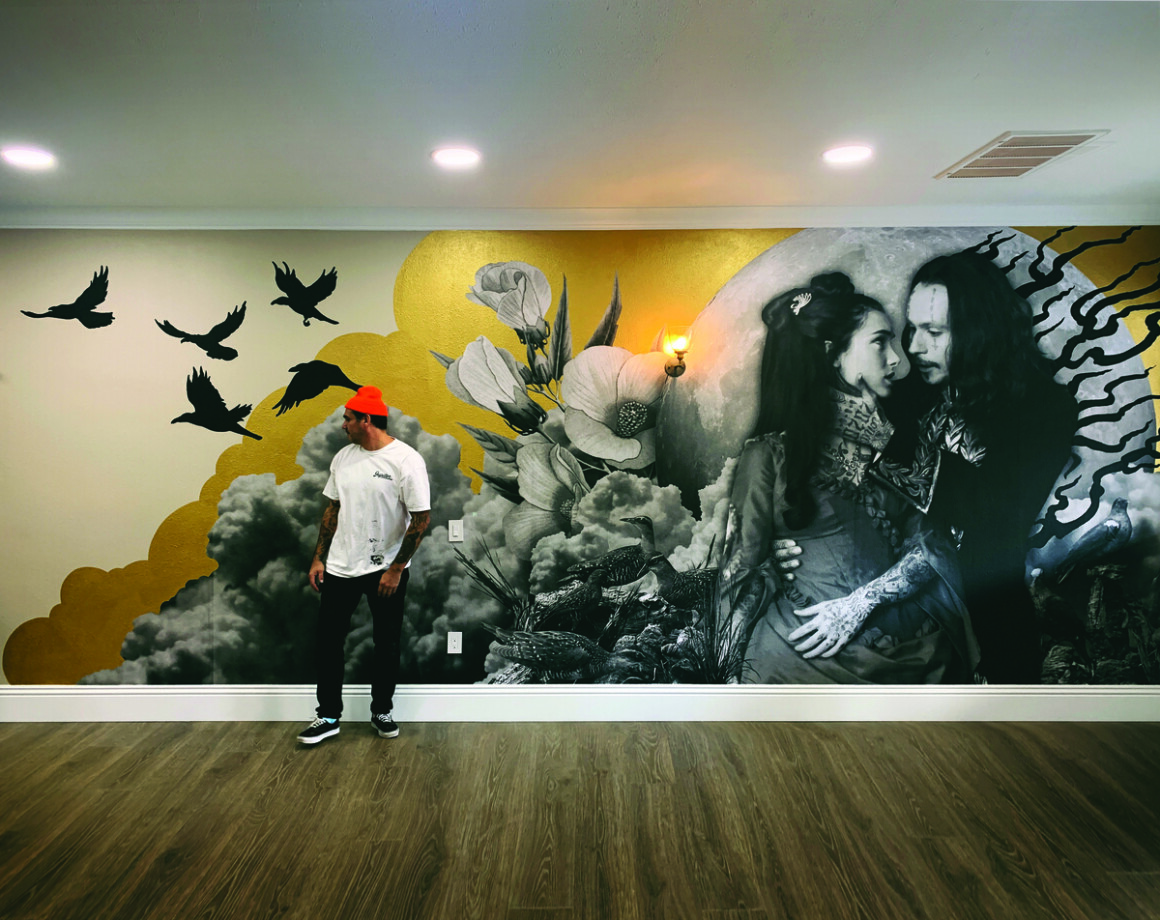
Artist Cheyenne Randall’s earliest years were spent in Minneapolis where his mother, “a true 1960s hippie,” filled his upbringing with vibrance and wonderment. His father, a member of the Rosebud Indian Reservation, was an artist who often provided tools for the young man to create artworks of his own and even involved his son in his art pieces, nurturing Randall’s love of art. “My time with my pops was short, but I’m grateful I got to work on a number of pieces with him before his passing in ’95,” he says.
Randall’s family relocated to Seattle when he was 10, and by the time he was a teenager, he was drawing regularly, often recreating band logos. “I liked to appropriate and play with logos and iconography long before I knew what that was,” he says.
Academics wasn’t Randall’s strong suit, so he made a living in the trades while also pursuing his passions. Soon, Randall amplified his artwork, constructing large-scale murals that oftentimes featured celebrities peppered in ink, each concocted with Randall’s creativity. He says, “Being a grunt, framing, house painting, and carpentry taught me many of the skills that influence the way I make my mixed media and plan/execute a mural today.”
Most of your artworks have people with tattoos. Why tattoos?
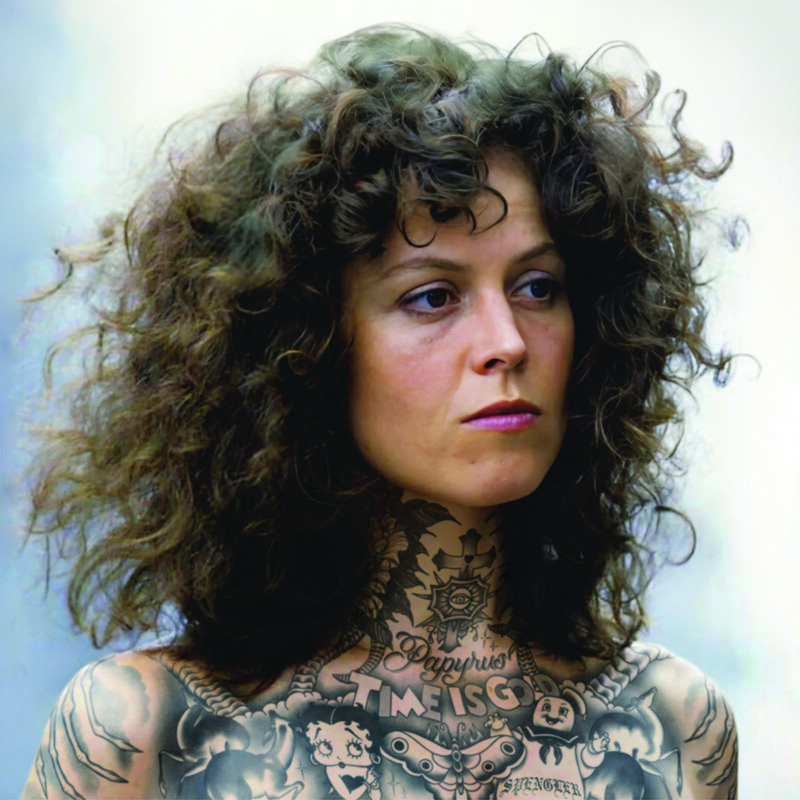
I think people in photographs are a perfect canvas. I’ve always been drawing on people’s faces in magazines and stuff so the next logical step for me was Photoshop to try and make them look real.
It’s also just good fun, like the Sigourney Weaver one I did last year. Sometimes there’s a nod to friends or inside jokes; Easter eggs like “Spengler” tattooed in Old English on the Stay Puft Marshmallow Man tattoo on her chest or the Facehuggers from “Aliens” on her shoulders. I enjoy incorporating old vintage ads and logos or using flash from someone like [tattoo artist] Rosie Camanga. Overall tattoos rule — I’ll probably always be drawing them all over photos.
What piece of art made you think, “Hey, I can make a living doing this!” and why? How have your art practices changed since then?
I’m not sure exactly which piece set the tone. Around 2012, social media was just starting to be a thing for me, and I posted a bunch of mixed media drawings on ledger paper and got offers to purchase them right away. I would make a new batch, post, and sell.
The tattoo stuff came in around the same time and by 2013 I was staying busy with art full-time. I always envisioned more for the digital works, so I started printing those out on large format printers and pasting them up around the city or at abandoned spaces. I had a lot of fun driving all over the West Coast pasting up spots and I think people really enjoyed going out and finding them. (See #PastingtheWest on Instagram). That led to commissions from businesses and private residences, and I started doing large-scale installations as a job.
I think the way my practices have changed is that my wife Ariel and I keep it real mom-and-pop. She does all the front-end logistical stuff while I focus on the art and labor. We prefer to work directly with collectors and clients and not so much with galleries or middlemen — something previously that seemed to murk the waters. We’ve worked hard to have a complete shop full of tools and supplies for the mural installations, and printers for archival prints and wide-format printing.
What was your first large-scale installation and what inspired you to do it?
My first large-scale installation was probably at Roq La Rue Gallery in Seattle. It was a 25-by-40-foot wall with stairs and a door of “Pretty Nose,” a Cheyenne [Tribe] woman. I’m always inspired by my ancestors, what they went through, and how we are all still very much here. I wanted that to be represented then and there.
Which of your murals has the most sentimental value and why?
I’d have to say the mural I did up at Idyllwild Arts Academy titled “Mergers & Acquisitions.” That piece is about the unstoppable force of exponential growth and “manifest destiny.” It’s a collage of two photos by Roland Reed of some Blackfoot Natives on cliffs from around 1912 overlooking downtown Los Angeles. It’s about 40 feet wide on the library there. It’s like going back in time and seeing what’s coming; for my ancestors it was tragic. But again, it’s important for me to represent that side of my lineage and that story as a contemporary native artist today.
Where can people see your murals and other artworks?
I think the best place to see the installations and artwork would be on my Instagram feed (@indiangiver). Many of them are in a business or private space; very few that you can just walk right up to on the street. I’d love for people to check them out and go support the business that commissioned the pieces, all tagged and mentioned in my posts.

For more articles like these, check out here.
Written by Amy Higgins
Editor's Picks
Bridging Classical Art and Modern Tattooing
Esteban Rodriguez brings the discipline of classical fine art to the living canvas of skin, creating hyper-realistic tattoos that merge technical mastery with emotional depth.
Show Your Ink Fashions Brings Custom Style to Tattoo Culture
Show Your Ink Fashions creates custom shirts designed to showcase your tattoos as wearable art, blending fashion with personal expression.
The Ultimate “Superman” Tattoo Roundup: Just in Time for Superman’s Return to Screens
With Superman’s big return to theaters, fans are revisiting some of the most iconic ink inspired by the Man of Steel.

